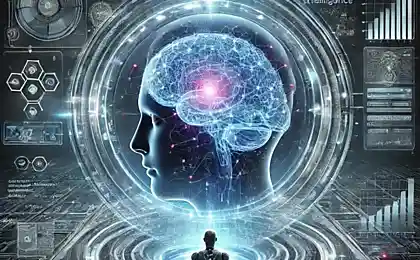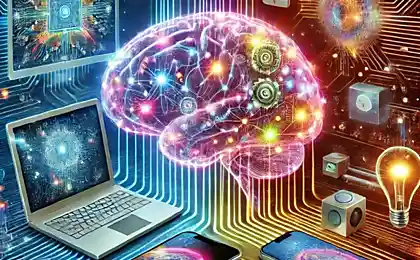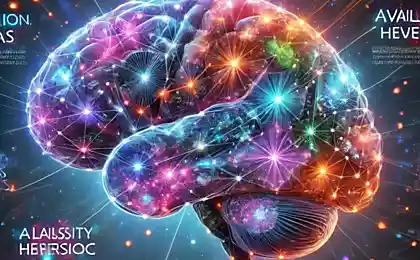257
How to recognize someone with developmental delay
Recognize the invisible
How to understand that a person has developmental characteristics, and why it is important for everyone to know this

In everyday life, we constantly interact with people, unaware of what complex processes are happening in their minds. Some of our acquaintances, colleagues or even loved ones may have developmental features that go unnoticed for years. Understanding these features not only helps to build more effective communication, but also opens the way to a true acceptance of human diversity.
Developmental delay is neither a sentence nor a cause for stigmatization. This is a feature of the functioning of the nervous system, which affects the speed and ways of processing information, social interaction and adaptation to the world around us.
Cognitive markers: what gives out the features of thinking
The first signs of developmental delay are often manifested in the features of cognitive processes. A person may have difficulty concentrating – their eyes often wander, they are easily distracted by extraneous sounds or movements. It is important to understand that this behavior is not the result of poor manners or unwillingness to listen.

Studies show that people with developmental delay often have a 20-40% decrease in working memory compared to the population average.
Information processing is slower than usual. If in a conversation a person often asks to repeat a question, makes long pauses before answering or answers not quite on the topic, this may indicate features of cognitive functioning. Such people often use simpler constructs in speech, avoid complex sentences, and may have difficulty understanding abstract concepts.
Speech characteristics
Limited vocabulary, repetition of phrases, difficulty with grammar, literal understanding of metaphors and idioms.
Memory and learning
Difficulties with memorizing new information, the need for repeated repetition, problems with transferring skills.
Social Signals: How to Show Up in Communication
Social interaction is a complex dance of nonverbal cues, contextual understanding, and emotional regulation. People with developmental delay often experience difficulties in this area, which can manifest in various forms.
Nonverbal communication can be disrupted: the person avoids eye contact, stands too close or too far from the interlocutor, does not catch social boundaries. His facial expressions may seem inadequate situation - too intense or, conversely, inexpressive.
It's important to remember: Lack of eye contact does not always mean impoliteness or disinterest. For many people with developmental disabilities, maintaining visual contact requires considerable effort and can interfere with concentrating on conversation.
Emotional regulation
One of the most noticeable signs is the instability of emotional reactions. A person may overreact to minor changes in plans, have difficulty moving from one activity to another, or display emotions that seem unsuitable for the situation.

The story of Maria, a 32-year-old office worker, illustrates how subtle developmental features in the work environment can be. For a long time, colleagues could not understand why she was so sensitive to changes in the schedule of meetings and why she needed written confirmation of all oral agreements. Only after professional diagnosis did it become clear that Maria had a mild form of developmental delay that affected her ability to process changes and hold complex information in her memory.
Behavioral Patterns: Keys to Understanding
The behavior of a person with developmental delay is often characterized by certain patterns that may seem strange or inadequate to others. Stereotyped movements – rocking, tapping, obsessive gestures – serve as a way of complacency and regulation of sensory input.
Rigid thinking is manifested in difficulties adapting to new situations, persistently following established rules and procedures, even when they are ineffective in a particular situation.
Features of training and work
In a professional environment, such people may demonstrate high performance in routine tasks, but have serious difficulties in innovation or working under conditions of uncertainty. They often need clear instructions, structured feedback, and extra time to learn new skills.
Neuropsychological studies show that people with developmental delay often have preserved "islands" of abilities - areas in which their functioning may be normal or even above average.
Diagnostic Approaches: From Observation to Understanding
Recognition of developmental delay requires an integrated approach and professional evaluation. Clinical criteria include an assessment of intellectual functioning, adaptive behavior, and the age of symptoms.
It is important to understand that diagnosis is not a process of labeling, but a way to understand individual needs. Modern diagnostic tools, such as Wechsler scales or adaptive behavioral scales, provide a detailed picture of the strengths and weaknesses of cognitive functioning.
Differential diagnosis
Developmental delay is important to distinguish from other conditions: dementia (which is characterized by the loss of previously acquired abilities), specific learning disabilities (which affect individual cognitive domains), and mental disorders (which can temporarily affect cognitive functioning).
Practical recommendations: how to interact effectively
Understanding the characteristics of a person with developmental delay opens up opportunities for more effective interaction. Patience and clarity are key principles of successful communication.
In conversation.
Speak slowly and clearly, use simple sentences, give time to think about the answer, avoid sarcasm and ambiguity.
In training.
Break down complex tasks into simple steps, use visual cues, provide multiple repetitions, celebrate small successes.
At work.
Create a structured environment, provide written instructions, set clear expectations, and provide regular support.
Social integration: the path to an inclusive society
True inclusion begins with understanding and embracing human diversity. People with developmental delays can make a unique contribution to society if they are given appropriate opportunities and support.
Modern approaches to support include personalized development programs, professional rehabilitation and social support. Technological solutions, such as cognitive training applications or reminder systems, open up new possibilities for independent living.
Conclusion: A look into the future
Recognizing development delay is not the ultimate goal, but the starting point for a more inclusive and understanding society. Every person, regardless of his or her development, has the right to respect, understanding and the opportunity to realize his or her potential.
Our challenge as a society is to create an environment where differences are seen not as obstacles but as opportunities for growth and mutual enrichment. Understanding and acceptance are the first steps along the way.
Glossary of terms
Development delay A condition in which a person is significantly behind in intellectual and adaptive functioning compared to their peers.
Cognitive functions mental processes involving perception, attention, memory, thinking and speech.
Adaptive behaviour The ability to cope effectively with everyday life demands and social expectations.
Working memory A system of temporary storage and processing of information necessary to perform cognitive tasks.
Stereotyped movements Repetitive, rhythmic movements or actions that may serve to complacency.
Rigidity of thinking Difficulty switching between different concepts or adapting to changed circumstances.
Differential diagnosis The process of distinguishing one disease or condition from others with similar symptoms.
Inclusion The principle of organization of the social environment in which all people, regardless of their characteristics, have equal opportunities to participate in the life of society.
How to recognize a young person who can make money or has potential
What is Human Design? How is it useful to know your type?























